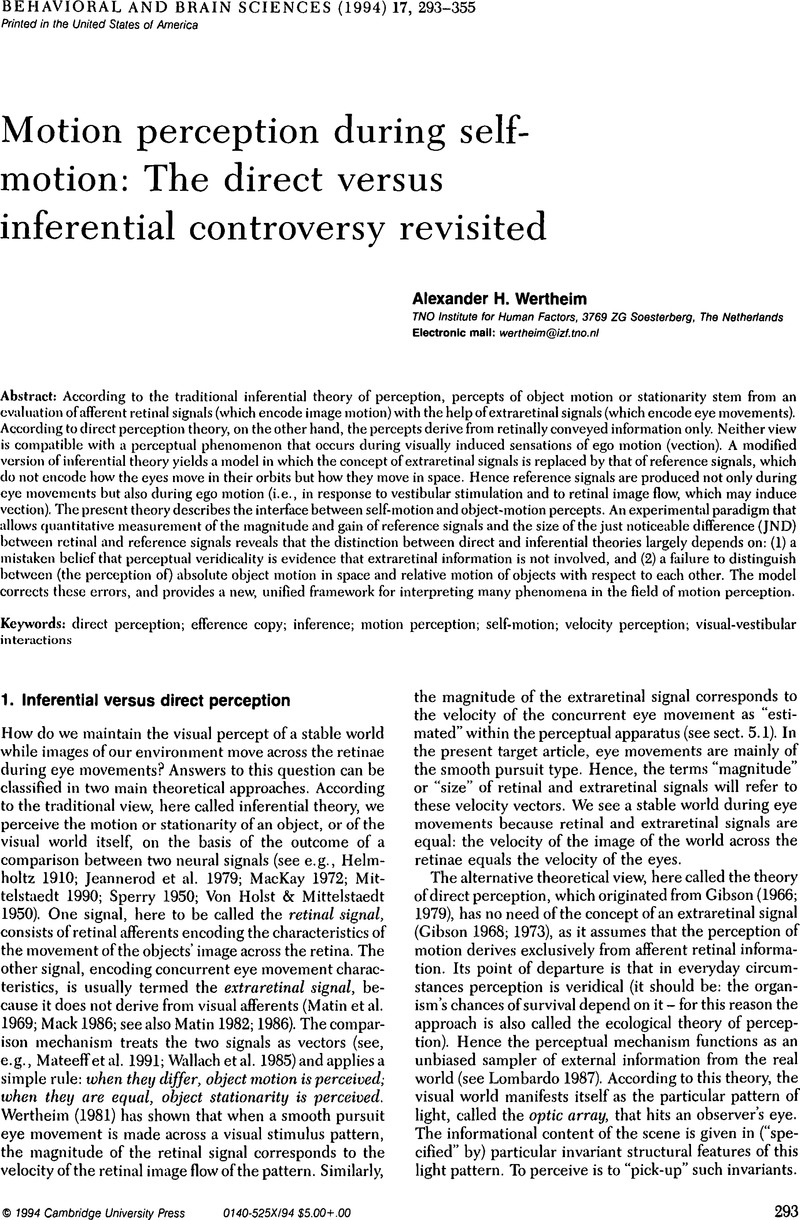Crossref Citations
This article has been cited by the following publications. This list is generated based on data provided by Crossref.
Palmisano, Stephen
Gillam, Barbara J
and
Blackburn, Shane G
2000.
Global-Perspective Jitter Improves Vection in Central Vision.
Perception,
Vol. 29,
Issue. 1,
p.
57.
Riecke, Bernhard E.
Schulte-Pelkum, Jörg
Avraamides, Marios N.
von der Heyde, Markus
and
Bülthoff, Heinrich H.
2005.
Scene consistency and spatial presence increase the sensation of self-motion in virtual reality.
p.
111.
Riecke, Bernhard E.
Schulte-Pelkum, Jörg
Avraamides, Marios N.
Heyde, Markus Von Der
and
Bülthoff, Heinrich H.
2006.
Cognitive factors can influence self-motion perception (vection) in virtual reality.
ACM Transactions on Applied Perception,
Vol. 3,
Issue. 3,
p.
194.
Bonato, Frederick
and
Bubka, Andrea
2006.
Chromaticity, Spatial Complexity, and Self-Motion Perception.
Perception,
Vol. 35,
Issue. 1,
p.
53.
Palmisano, Stephen
Allison, Robert S
and
Pekin, Fiona
2008.
Accelerating Self-Motion Displays Produce More Compelling Vection in Depth.
Perception,
Vol. 37,
Issue. 1,
p.
22.
Bonato, Frederick
Bubka, Andrea
Palmisano, Stephen
Phillip, Danielle
and
Moreno, Giselle
2008.
Vection Change Exacerbates Simulator Sickness in Virtual Environments.
Presence: Teleoperators and Virtual Environments,
Vol. 17,
Issue. 3,
p.
283.
Bubka, Andrea
and
Bonato, Frederick
2010.
Natural Visual-Field Features Enhance Vection.
Perception,
Vol. 39,
Issue. 5,
p.
627.
Riecke, Bernhard E.
and
Schulte-Pelkum, Jörg
2015.
Immersed in Media.
p.
187.
Kirollos, Ramy
and
Herdman, Chris M.
2021.
Measuring circular vection speed in a virtual reality headset.
Displays,
Vol. 69,
Issue. ,
p.
102049.
Sra, Misha
2023.
Enhancing the Sense of Presence in Virtual Reality.
IEEE Computer Graphics and Applications,
Vol. 43,
Issue. 4,
p.
90.





